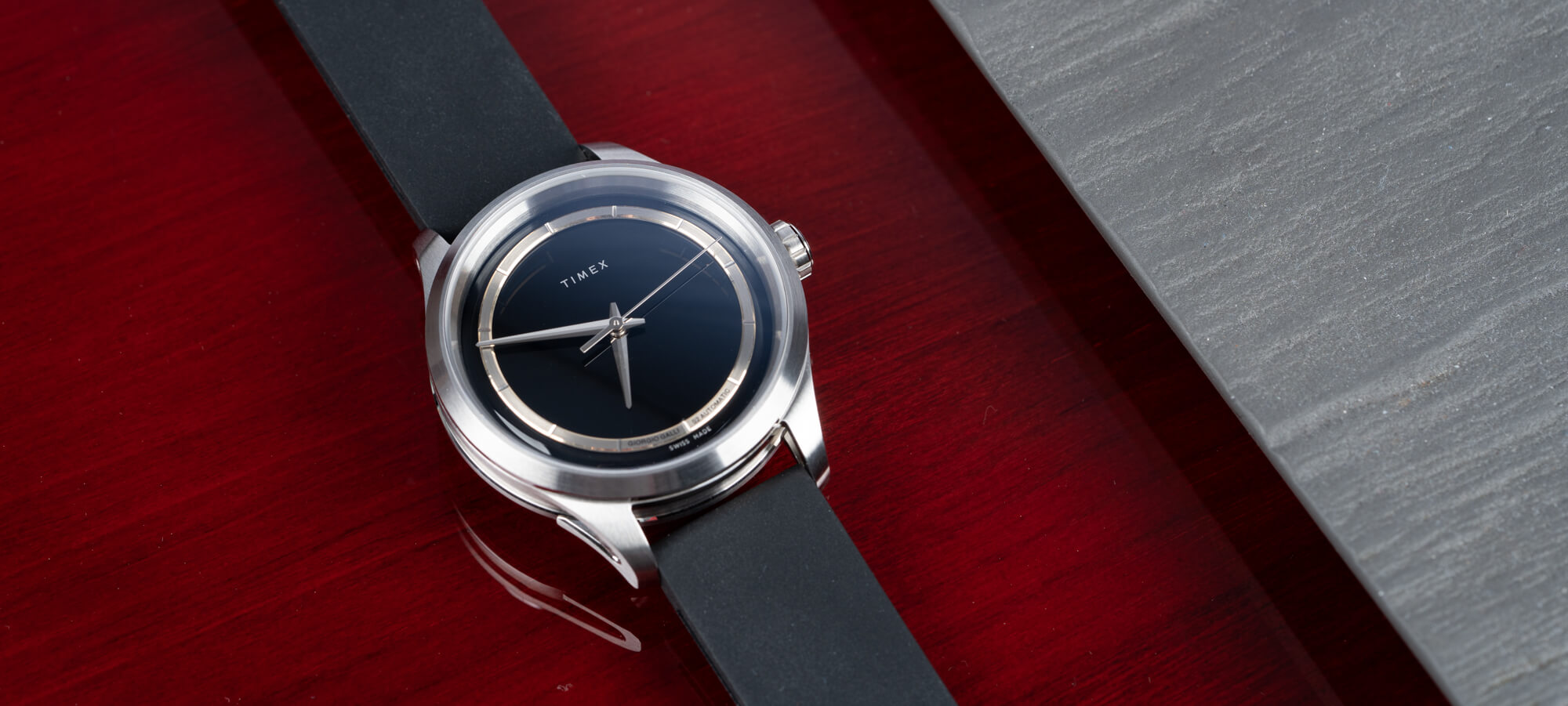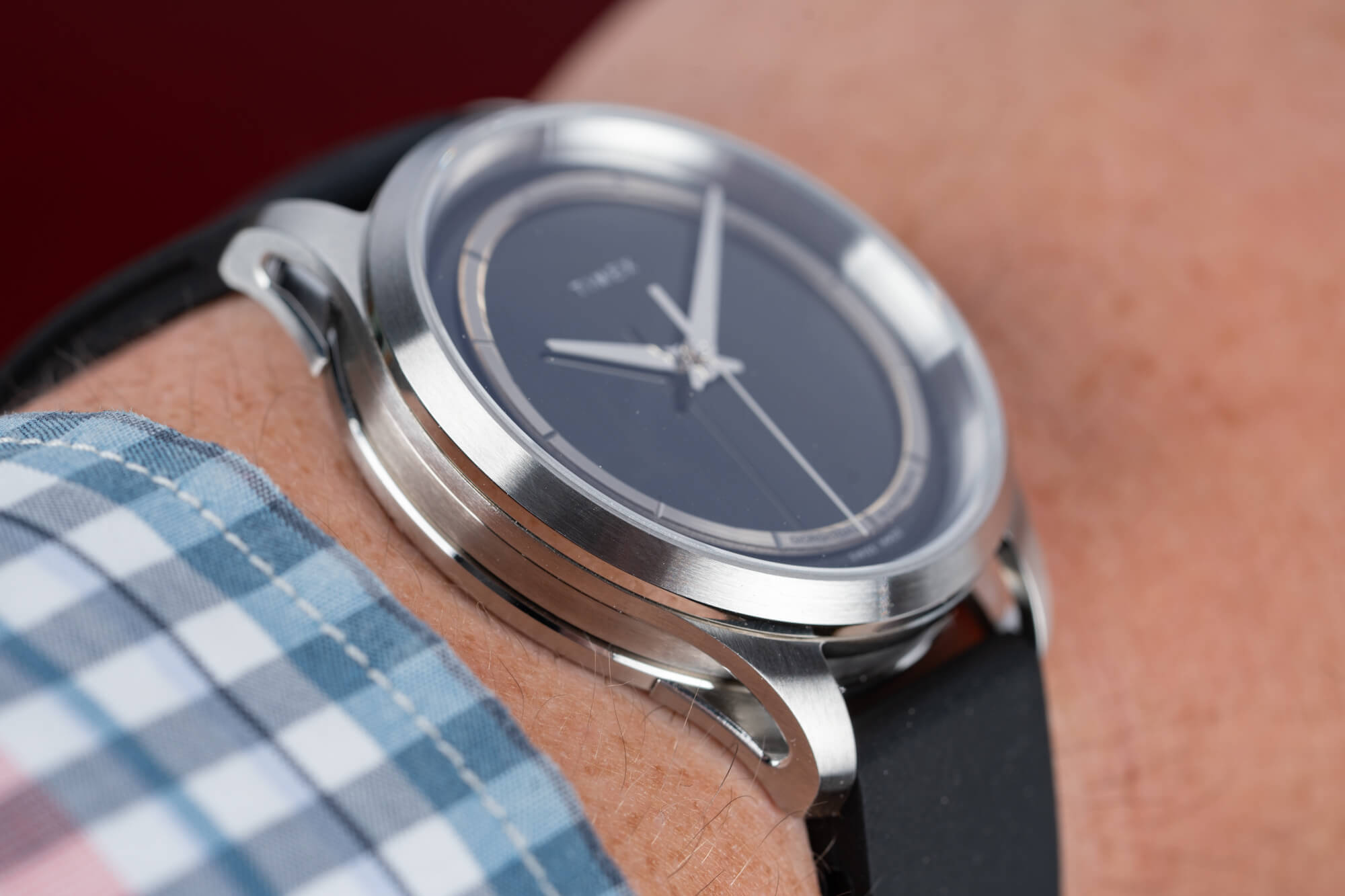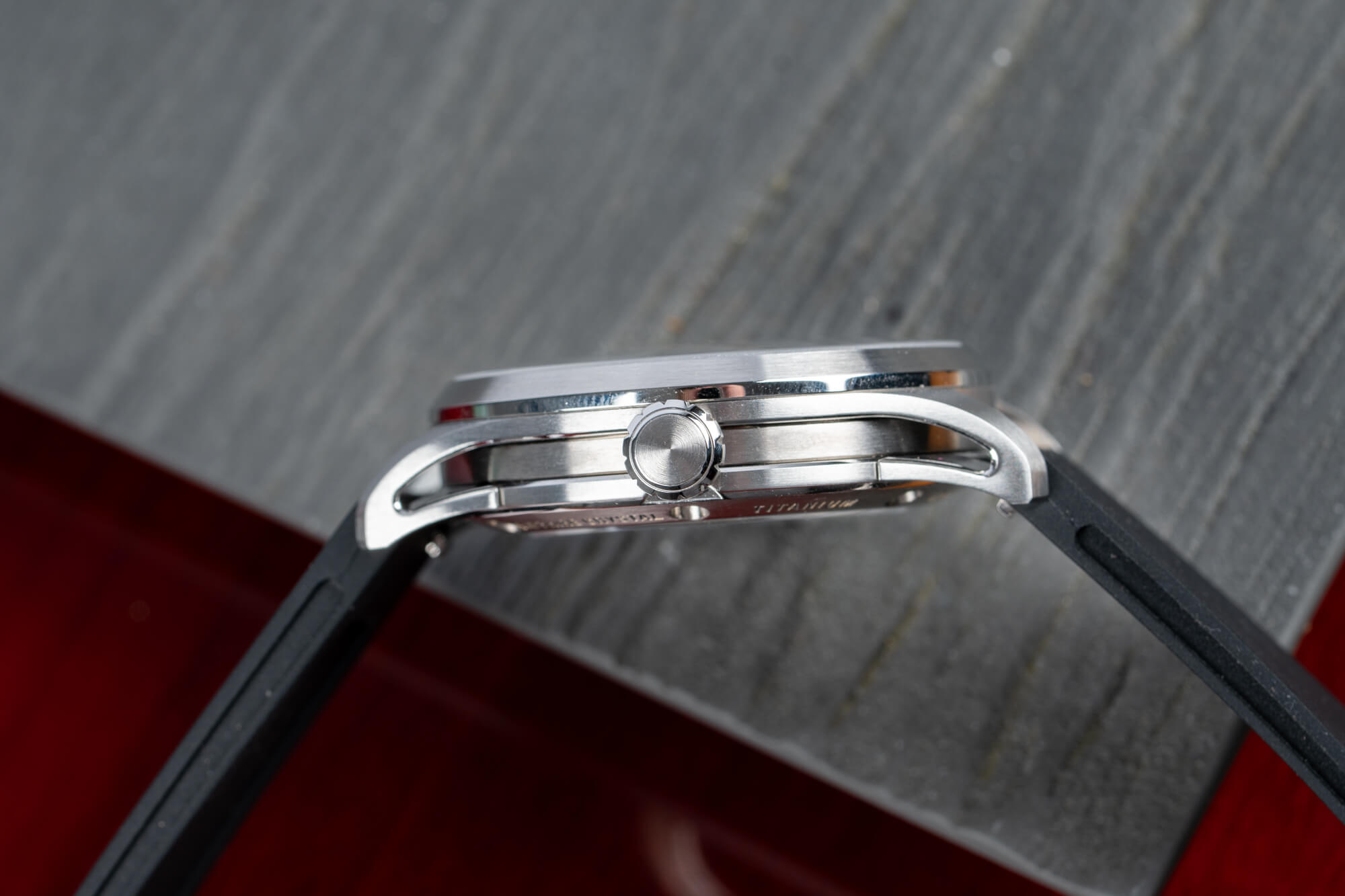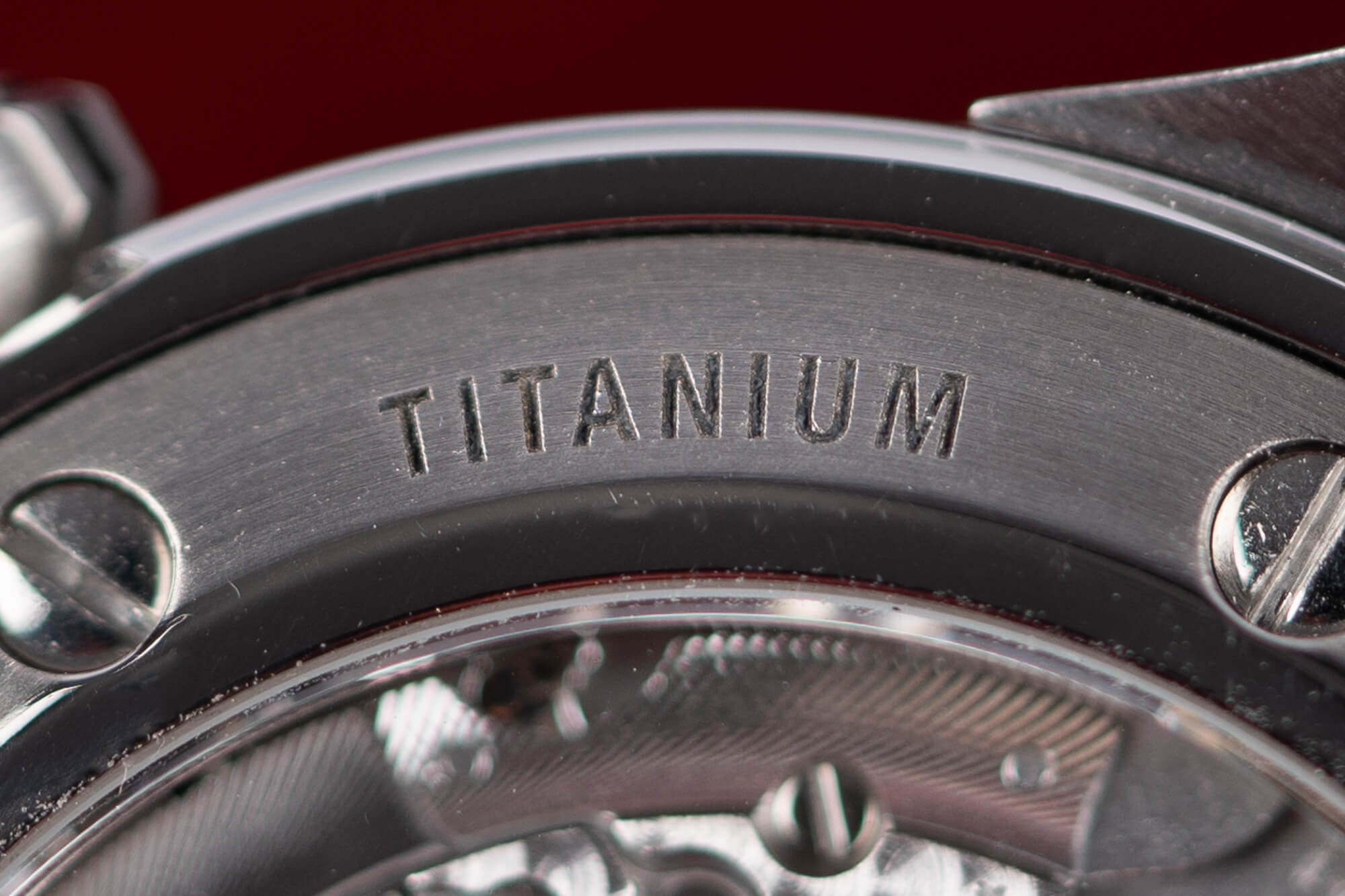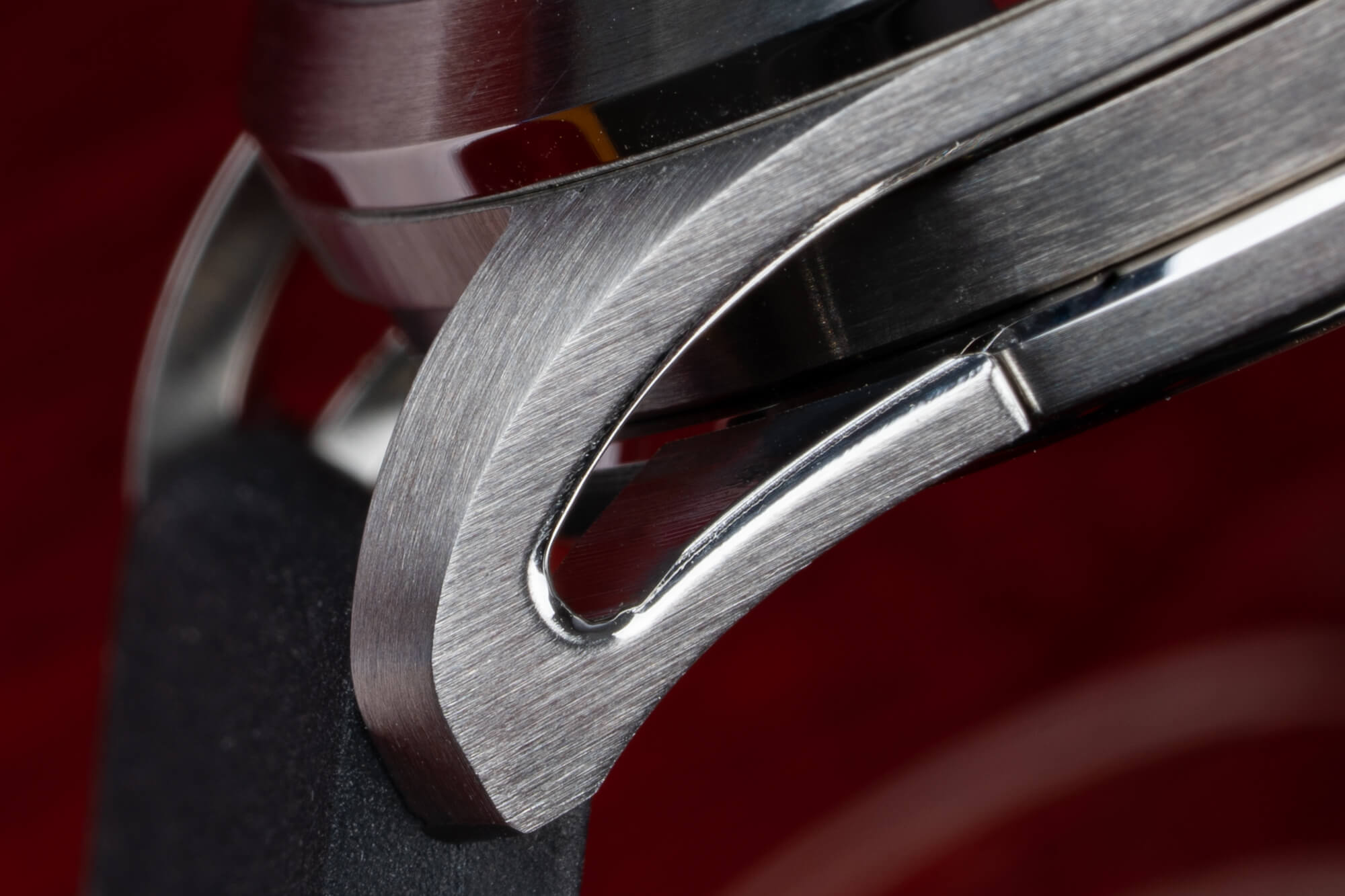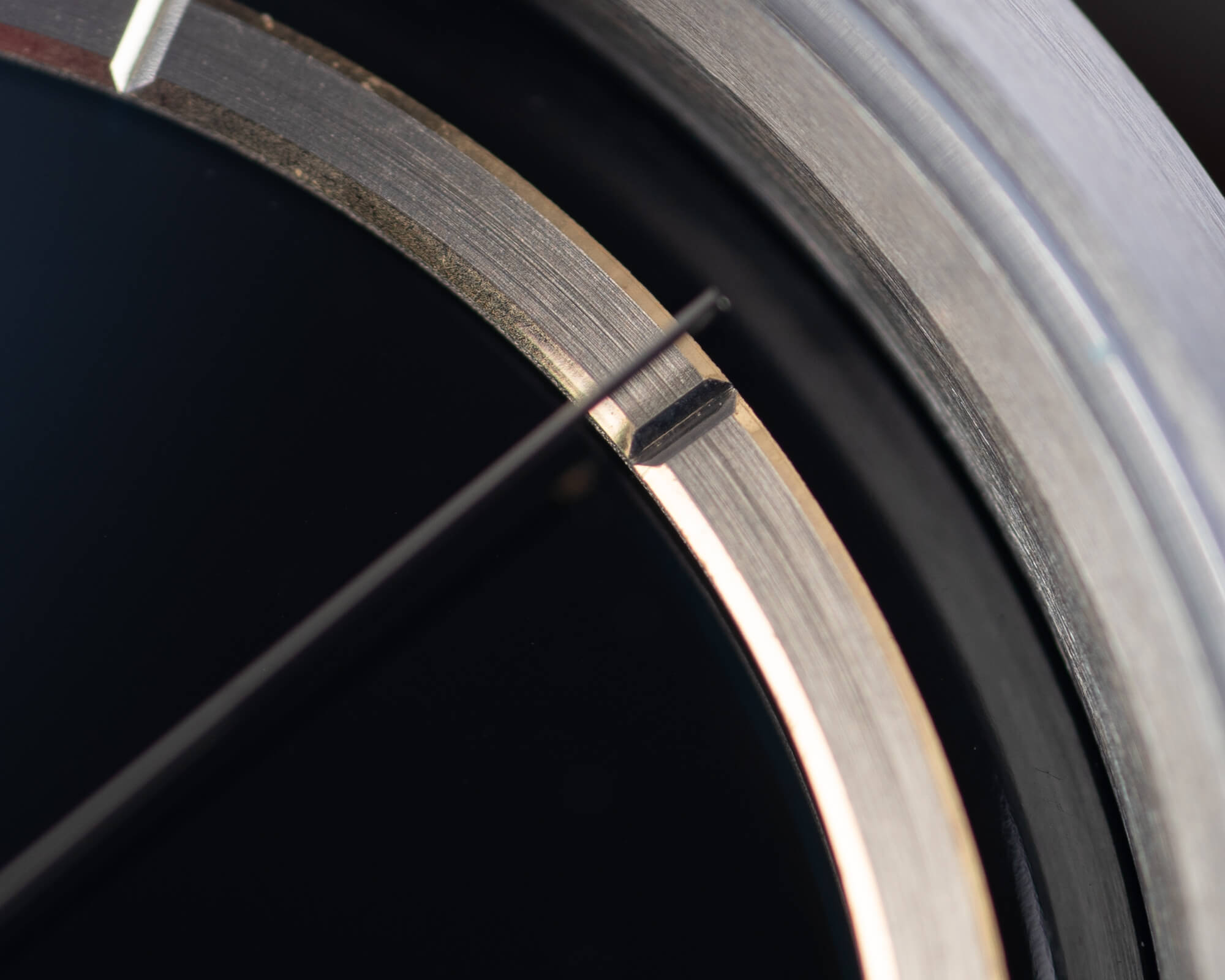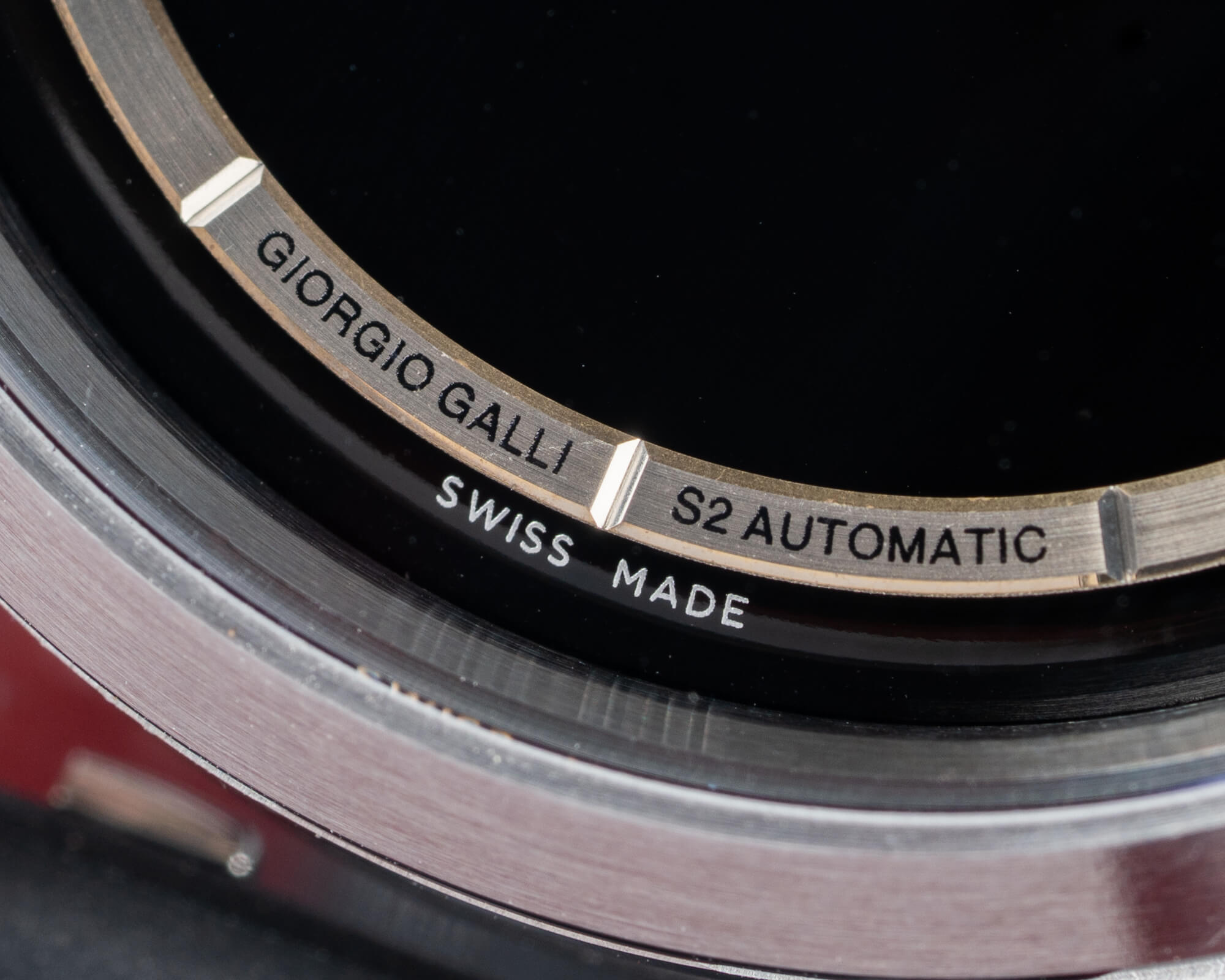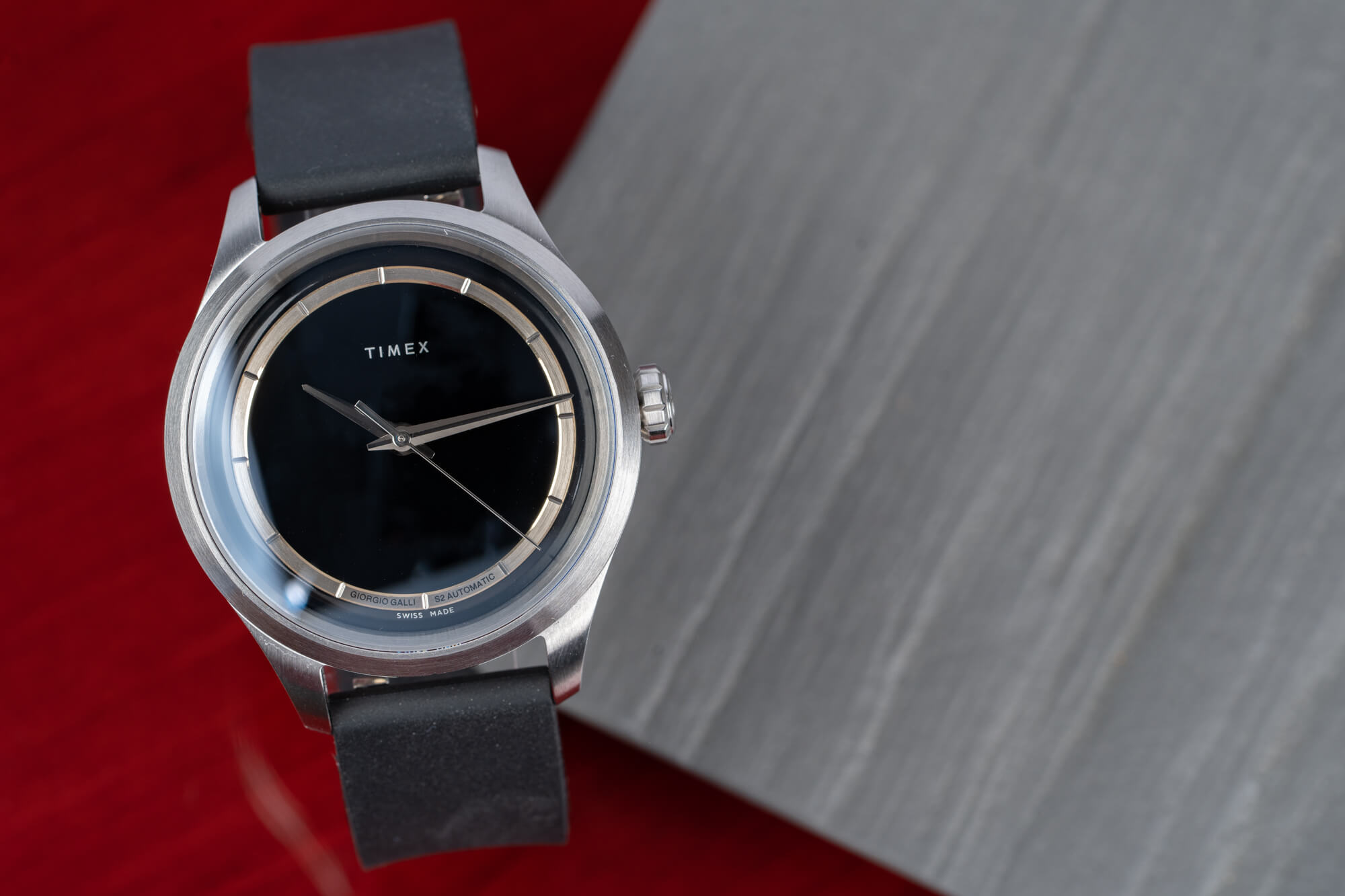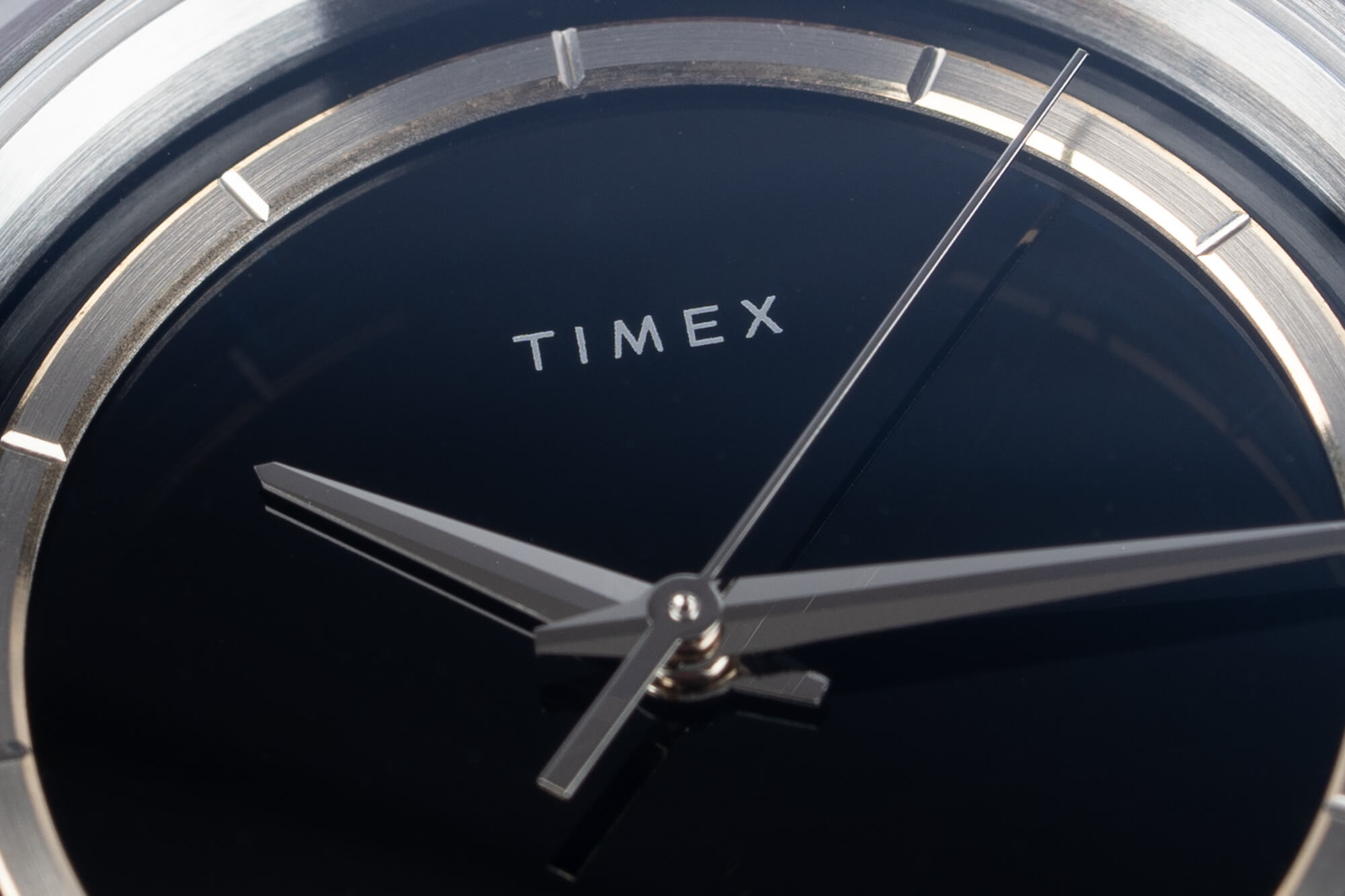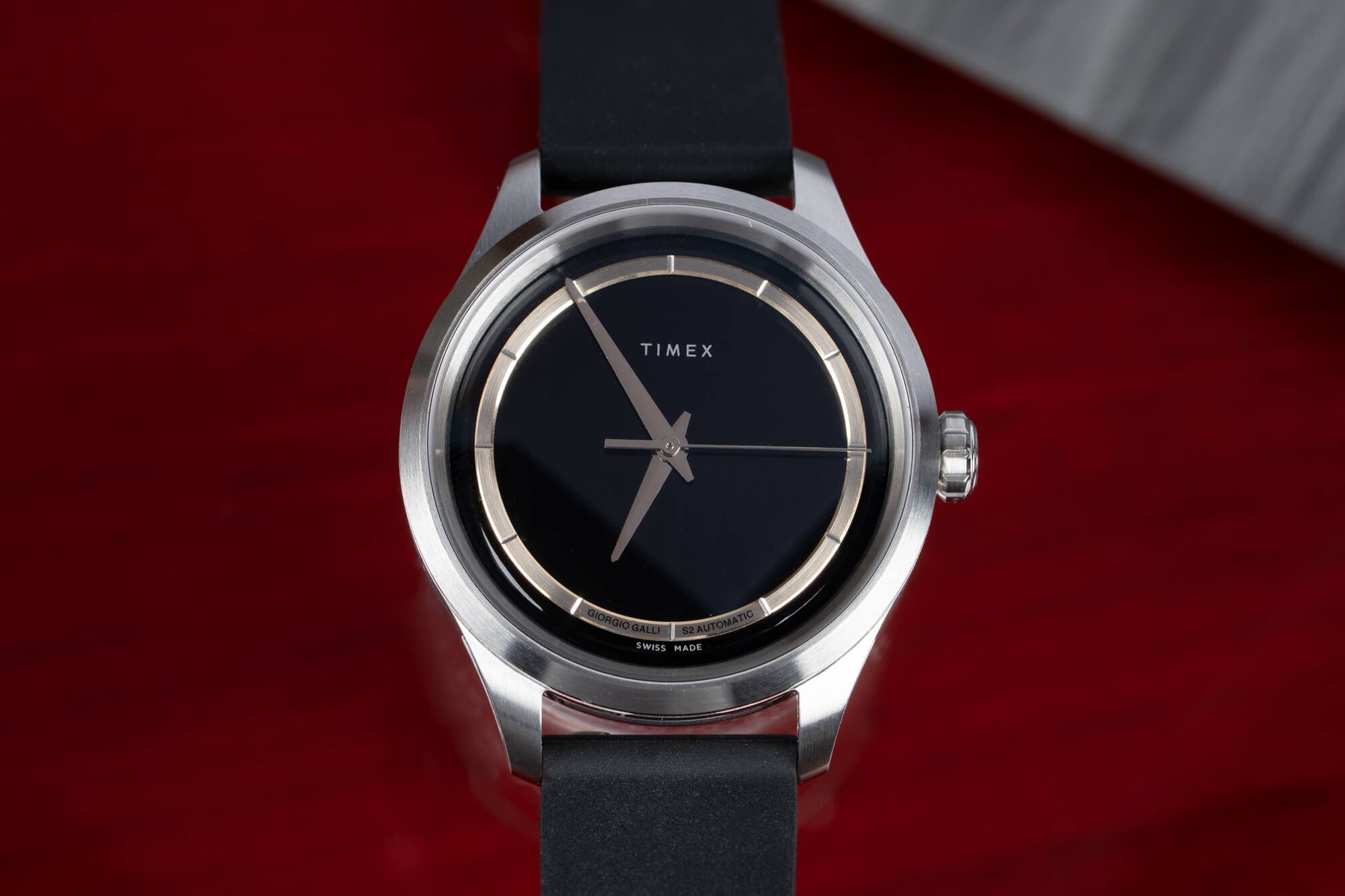
When Timex debuted the Giorgio Galli S1, I think everyone was both surprised and impressed. Here was an American watch company known for affordable quartz, giving its Italian design director the reins to make a higher-end automatic watch. To be sure, Timex has been rolling out more and more mechanical timepieces with enthusiast-pleasing designs as it taps into the still-hot reissue market with model lines like the Marlin, to say nothing of the quartz revival of the Q series. We knew Timex could design beautiful watches, but what we’d seen was the brand borrowing designs from its own historic catalog. This was an entirely different endeavor: creating a modern, well-designed timepiece that would sit atop the brand’s current offerings. The resulting Giorgio Galli S1 was an elegant masterpiece with a beautiful case, modern dial, and comfortable strap with a unique button closure. Originally offered in 41mm, it has since been sized down to 38mm and has also received a black-out version and a limited-edition gold model. Now, four years after the original model was introduced, Timex has released the Giogio Galli S2 Swiss Made, with upgrades to the case, strap, and movement, and a dial so elegant it’ll make you second-guess the brand name staring back at you.
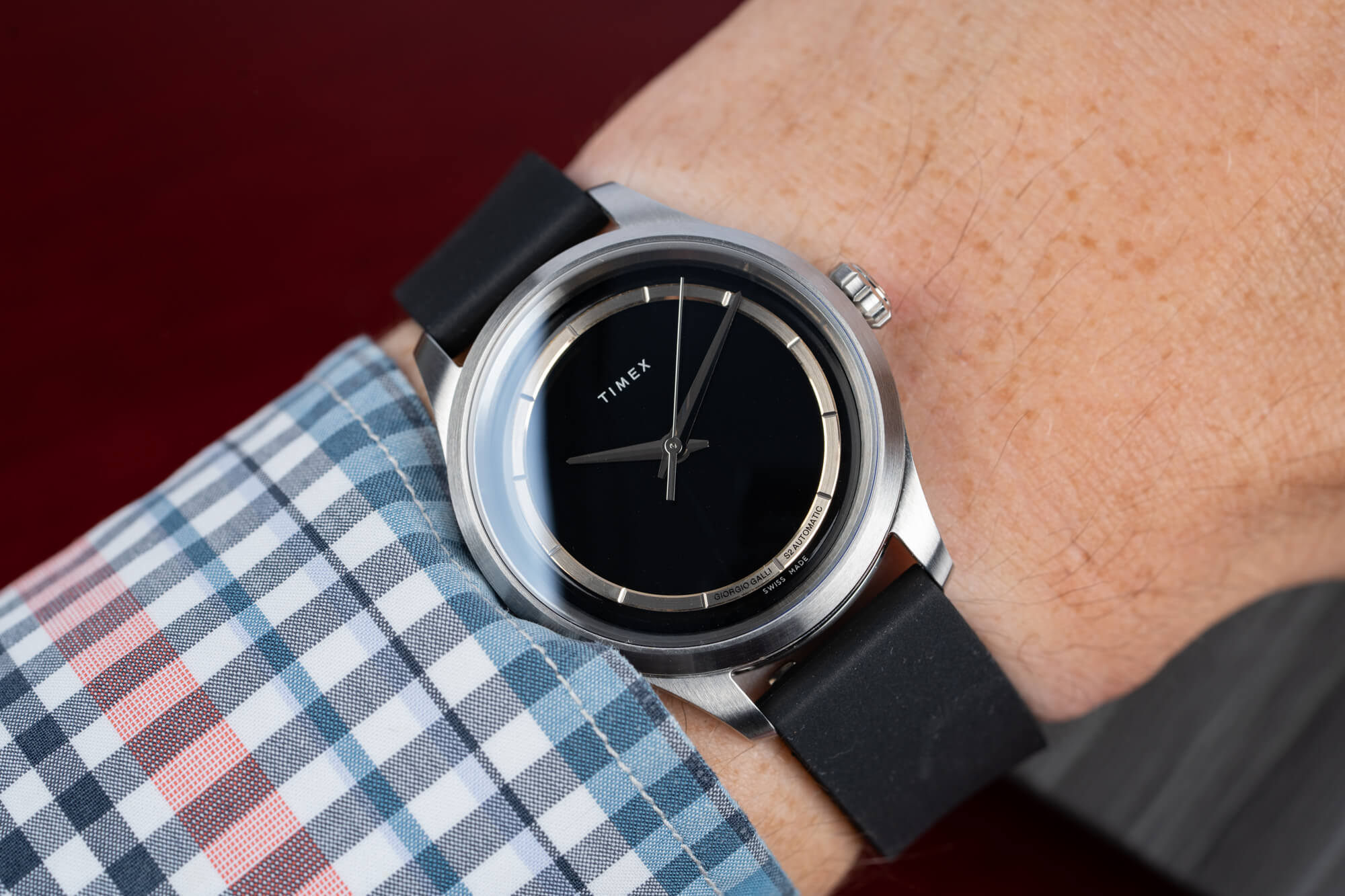
I’m reminded of two cars when I think more conceptually about the Giorgio Galli collection: the Volkswagen Phaeton and the Hyundai Genesis. Both of these cars debuted in the early 2000s and sought to elevate the offerings of their respective brands. It’s a risky gambit, delivering an out-of-class product, and it can easily backfire. The Phaeton saw such a dismal reception in North America that sales were discontinued after just two years; the model was pulled from global markets in 2016 (a lifespan mostly attributable to its domestic German sales). On the other hand, the Genesis was so successful that it was spun off after eight years into its own luxury brand that continues to sell well. The Giorgio Galli seems to be a similar attempt for Timex, an effort to push upmarket with an out-of-class offering. Having tested the waters with the S1, the brand appears to think it may well have created a Genesis and not a Phaeton and is using that confidence to push further with the new Giorgio Galli S2 Swiss Made while still keeping the price under $1,000.
While identical in form, the 38mm case has received some upgrades. It still has the sleek brushed silhouette with polished accents here and there, and the captivating carved-out lugs—this is still the same beautiful case that drew people to the S1. While the lug-to-lug remains at 46mm, the thickness has increased slightly from 11.6mm to 12mm, likely on account of the thicker movement, but the watch remains eminently wearable. I’ve heard the case design compared to the Audemars Piguet Code 11.59 case, and I don’t think that’s unfair, though I wouldn’t say it’s derivative. While the finishing is obviously nowhere near that level (and no one should expect it to be), it’s quite impressive when compared to most Timexes, with very sharp transitions and crisp brushing. The only thing I saw was a bit of distortion in the transitions between brushed and polished surfaces, which I found to be acceptable given that I could only see them under magnification.
Let’s do science. Instead of being entirely made with stainless steel, the injection-molded Giorgio Galli S2 Swiss Made case now features a stainless steel frame and crown with a grade 2 titanium mid-case and caseback. You may think this would yield a lighter case, but interestingly, the watch weighs six grams more than the S1 (79g vs. 73g). Blame the bulkier clasp and the slightly larger movement. If you’re thinking that 6g is noticeable on the wrist, you’d be right, but it’s just barely so. Generally, humans are able to perceive 3% differences in weight; if you have a 50g weight, you could perceive a difference of 1.5g, with a 100g weight, it would be 3g. The new S2 Swiss Made is 8% heavier than the S1, which is noticeable, but not in a way that will change the wearing experience.
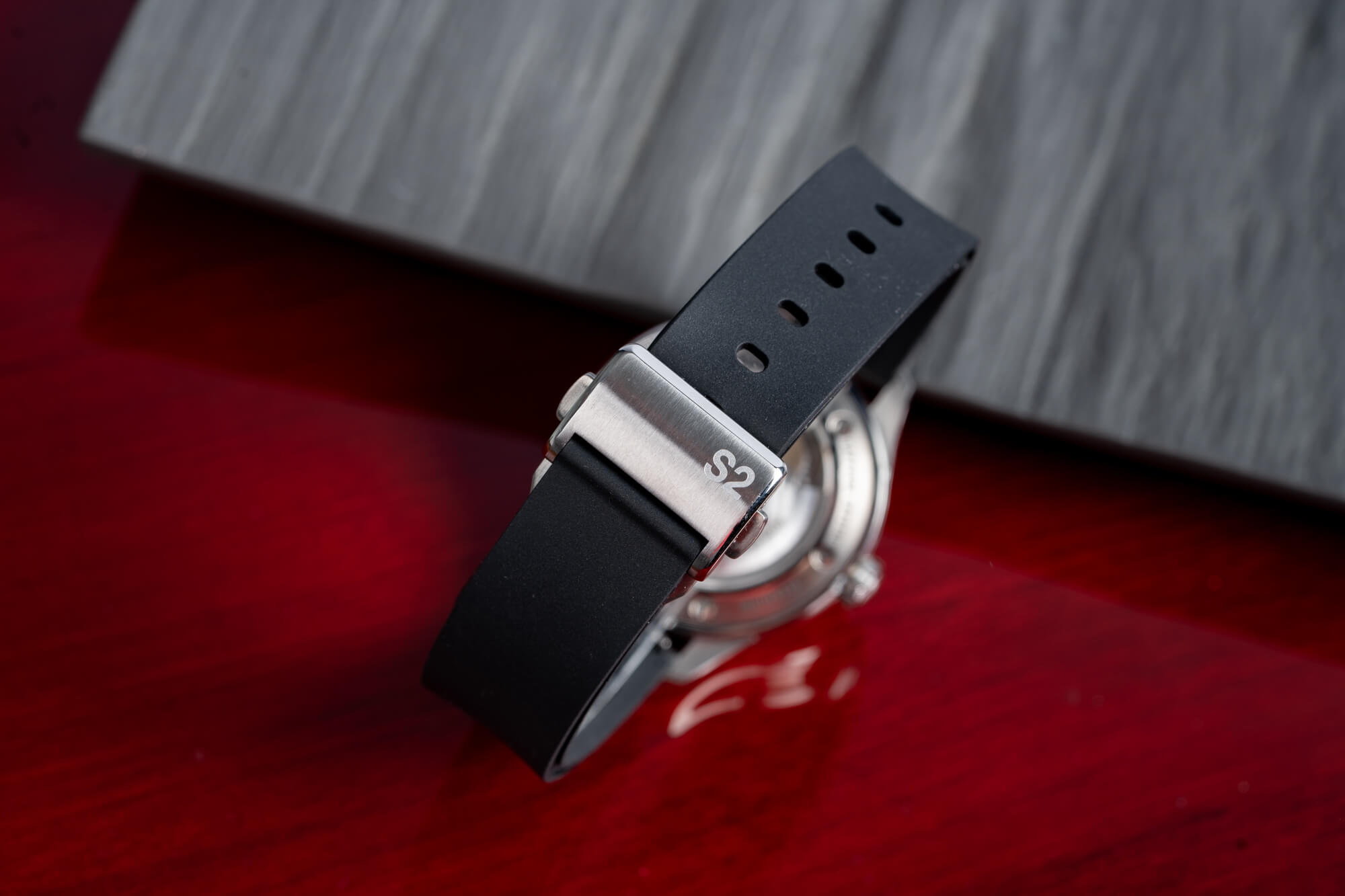 One key improvement is the strap and its clasp. The quick-release strap remains 18mm and is made of the same nitrile butadiene rubber, a highly durable synthetic rubber that’s very soft, very comfortable, and doesn’t attract dust like some other rubber straps might. The S1’s strap design saw it fastened by a pin buckle closure with a button on the tail that pressed through the appropriate sizing hole. It was novel but perhaps a bit overengineered. The S2 gets a more common stainless steel push-button folding clasp that simplifies the job but was occasionally finicky, requiring a second attempt to close tight. I still preferred it to the S1’s closure system, as it was more straightforward and kept the strap’s lines cleaner.
One key improvement is the strap and its clasp. The quick-release strap remains 18mm and is made of the same nitrile butadiene rubber, a highly durable synthetic rubber that’s very soft, very comfortable, and doesn’t attract dust like some other rubber straps might. The S1’s strap design saw it fastened by a pin buckle closure with a button on the tail that pressed through the appropriate sizing hole. It was novel but perhaps a bit overengineered. The S2 gets a more common stainless steel push-button folding clasp that simplifies the job but was occasionally finicky, requiring a second attempt to close tight. I still preferred it to the S1’s closure system, as it was more straightforward and kept the strap’s lines cleaner.
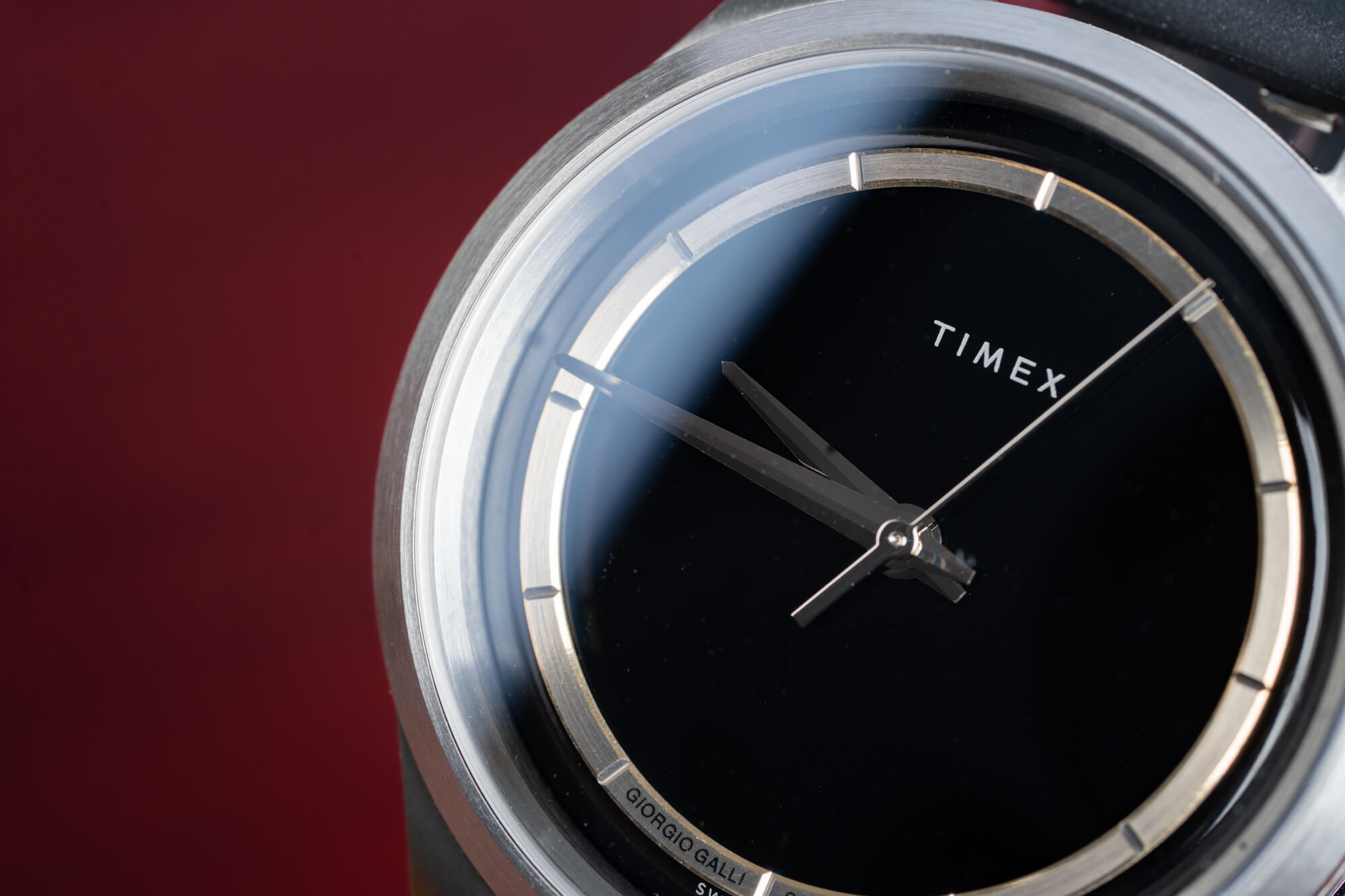 The dial is where I think Timex and Giorgio Galli really punched things up. The previous dial was very attractive with its sunburst finish, but it fell apart under scrutiny, with harsh edges to the minute cutouts, flat hands, and styling that couldn’t make up its mind. The entire aesthetic has shifted for the Giorgio Galli S2, though. Where that original dial struggled to decide whether it was dressy or sporty, this one firmly plants itself in the sophisticated domain of the former. The black is almost impossibly black, so much so that I wondered if Timex had gone for broke and used Vantablack. The onyx enamel has a slight gloss to it but mostly just stays that pitch-dark color, allowing the other elements to truly pop.
The dial is where I think Timex and Giorgio Galli really punched things up. The previous dial was very attractive with its sunburst finish, but it fell apart under scrutiny, with harsh edges to the minute cutouts, flat hands, and styling that couldn’t make up its mind. The entire aesthetic has shifted for the Giorgio Galli S2, though. Where that original dial struggled to decide whether it was dressy or sporty, this one firmly plants itself in the sophisticated domain of the former. The black is almost impossibly black, so much so that I wondered if Timex had gone for broke and used Vantablack. The onyx enamel has a slight gloss to it but mostly just stays that pitch-dark color, allowing the other elements to truly pop.
The obelisk handset is high-polished and beveled, giving it a depth lacking on the S1, though, at some angles, it can get lost against the black. Without any lume, it doesn’t stand a chance in low light. (I’d still choose a watch with no lume over a watch with poor lume like the S1.) But the most significant aesthetic change of the entire watch is the applied steel hour ring, which features a brushed finish and notches to mark the hours, with Giorgio Galli and the model name at six, just above “Swiss Made” on the dial. It has a golden shine to it, though the brand doesn’t describe it as such anywhere, so I can’t say whether there’s some coating on it or not. The simple refinement of the applied ring combined with the near-sterile dial and the polished handset elevate this so far above and beyond the S1 that one might wonder if the S1 weren’t some prototype that got released by mistake.
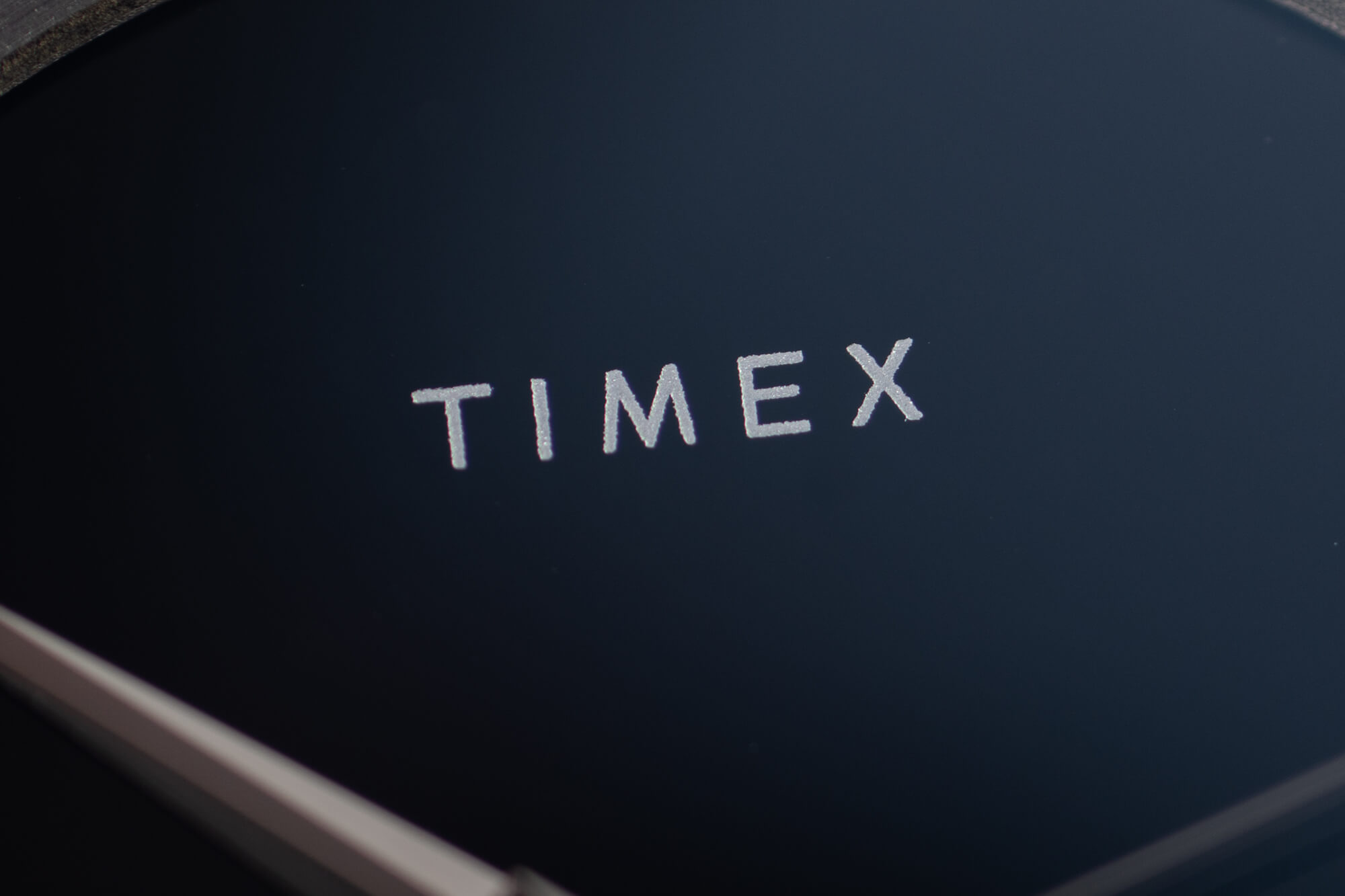
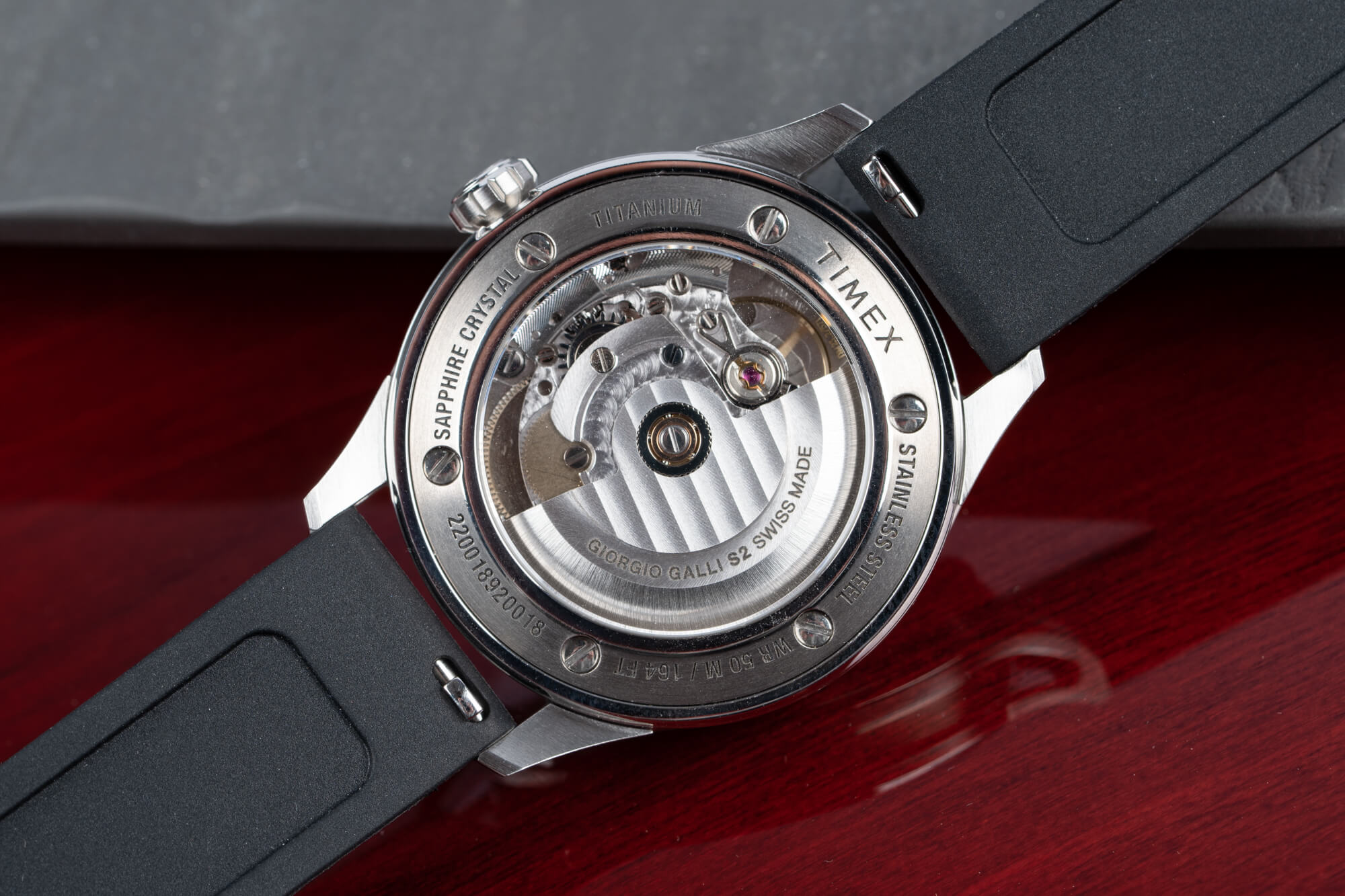
Where the S1 had the reliable Miyota 9039, the Giorgio Galli S2 has been fitted with a Sellita SW200-1. Practically speaking, you’re getting two benefits here: bidirectional winding, which is more efficient, and better accuracy by a factor of 2 or so. The SW200 is a thicker movement, but delivers a quoted 41-hour power reserve (around the same as the 9039) at 28,800 vph and an accuracy of -/+12 seconds per day, assuming Timex is using a standard execution of the caliber. While the grade may not be the highest available (that would be chronometer-certified), the movement does appear to have a higher tier of finishing than the most basic iterations, with striping and snailing on the rotor and perlage on the plates. Honestly, I didn’t notice any difference in the timekeeping versus when I spent time with the S1, and you likely won’t either unless you keep fastidious track of such things. That is to say, both the 9039 and the SW200 are robust, reliable, and excellent movements, and while some componentry may be better in the SW200, the practical day-to-day experience will be negligible. But bully for Timex for pushing things higher with this model.
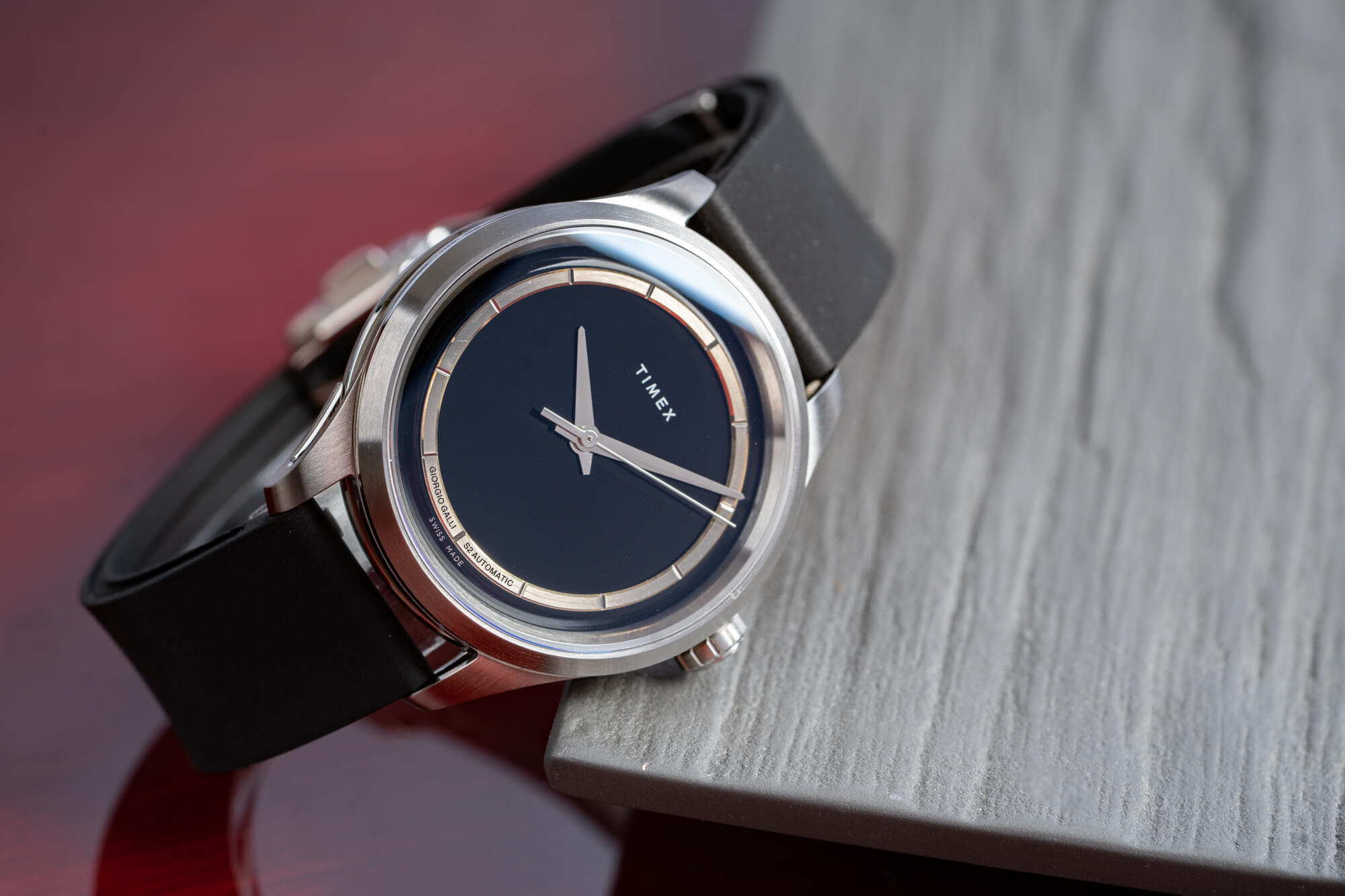 In our interview with Giorgio Galli about the S1 Automatic, he remarked that Timex is “extremely proud of our past but needs to look forward to our future and be able to endorse new directions.” Timex has clearly established itself as one of the leading brands for reissues, affordable or otherwise, but the Giorgio Galli collection looks upward and onward to push the brand forward and above its traditional market. The S2 continues that push with a higher-spec, better-finished timepiece that picks up where the S1 left off.
In our interview with Giorgio Galli about the S1 Automatic, he remarked that Timex is “extremely proud of our past but needs to look forward to our future and be able to endorse new directions.” Timex has clearly established itself as one of the leading brands for reissues, affordable or otherwise, but the Giorgio Galli collection looks upward and onward to push the brand forward and above its traditional market. The S2 continues that push with a higher-spec, better-finished timepiece that picks up where the S1 left off.
Those cars are still on my mind, though—the Phaeton and the Genesis. It looks to me like Timex was right and it does have a Genesis on its hands. That begs the question of what Timex plans for the Giorgio Galli collection: Will it continue as a Timex-branded upmarket collection, or will it transition into a standalone brand in some form, perhaps with Galli’s name on the dial and Timex in a subordinate position? The success of the S1 and the existence of the S2 suggest that there is room for and a likelihood of an S3 and beyond. How Timex chooses to position those future releases is anyone’s guess. The Timex Giorgio Galli S2 Swiss Made TW2W12700 is priced at $975 USD. For more information, please visit the brand’s website.

